Ukraine May Buy Hand-Me-Down F/A-18 Hornets From Australia. It's Not a Perfect Idea.
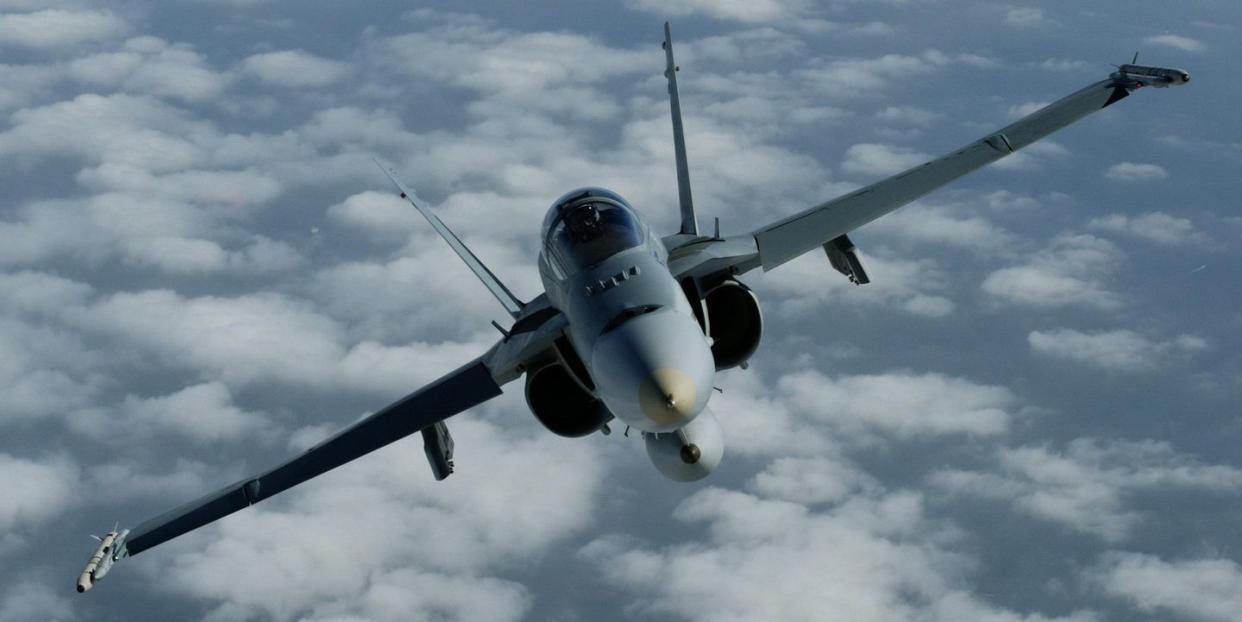
The Ukrainian ambassador to Australia, Vasyl Myrosnychenko, revealed to media early in June that Ukraine was studying the possibility of acquiring some or all of Australia’s 46 remaining FA-18A and two-seat F/A-18B Hornet jets. The last of these jets were retired from Royal Australian Air Force (RAAF) service two years ago, and would otherwise soon be either sold or destroyed.
Ukraine had previously focused its efforts on acquiring F-16s and Swedish Gripen single-engine jets. Now, the country is certain to receive F-16s, and seems increasingly likely to buy Gripens at some later point. But Australia’s 46 retired Hornets, in storage at Williamtown airbase near Newcastle, have created an option that Ukraine appears compelled to explore—despite the costs of introducing an additional type into service.
There are further reports that “high level negotiations” are already underway involving the U.S., Australia, and Ukraine over what could become Australia’s largest value transfer of military aid to date. The U.S. has already indicated that it is “favorably disposed” to Australia giving the American-designed jets to Ukraine, having been assured that such jets wouldn’t be used over Russian airspace.
Earlier in 2019, Australia sold 25 of its 71 remaining Hornets to Canada. Training contractor RAVN Aerospace (formerly Air USA) placed a deposit to purchase 41 of the 46 Australian Hornets for use in aggressor training, i.e. surrogate bad guys. That means RAVN must also give and receive authorization for such a complex transaction. A senior Australian official told ABC News that are “There are still many hurdles to clear before the F/A-18s can be sent to Ukraine.”
Another consideration is the condition of the aircraft. The Defense Post reported a claim that only 12 to 16 are “operable”. However, another source told Australia’s Financial Review that all but a “handful” of the ex-RAAF F/A-18s would require just a little work to restore to flyability and are in good condition.
To date, Australia is the largest non-NATO provider of assistance to Ukraine, having so far transferred $475 million in assistance, including customized M113AS4 APCs, Hawkei infantry mobility vehicles, 90 Bushmaster mine-resistant trucks, six M777 howitzers and 300 small D40 kamikaze drones.
The McDonnell-Douglas FA-18 Hornet entered service in the 1980s as a twin-engine multi-role fighter (thus having both the ‘Fighter’ and ‘Attack’ designation in its name) for both U.S. Navy carriers and land-based Marine Corps squadrons. The design is noted for its excellent low-speed handling characteristics and ability to achieve high angles of attack (i.e. the ability to point the nose at high angles above the plane’s current trajectory). It also came out in the 1980s with beyond-visual-range capabilities, fly-by-wire avionics, and digital multi-function displays—long before those had become universal in fourth-generation fighters.
Despite seeing plenty of combat duty in the Middle East and Balkans—including claiming two air-to-air kills, though one loss was also suffered to an Iraqi MiG-25—the FA-18 Hornet didn’t last particularly long in service due to the emergence of the enlarged FA-18E/F Super Hornet jet. The Super Hornet had greater range, far more advanced avionics, and a greatly reduced radar signature, and is generally considered a largely new plane—despite its evolutionary lineage from the Hornet. The U.S. Navy retired its Hornets in 2019, though the Marine Corps still operates 138 F/A-18Cs and Ds.
Importantly for Ukraine, the Hornet—like the F-16—can use the long-range AIM-120 fire-and-forget radar-guided missiles and radars that would give Ukrainian pilots a fighting chance against Russian Su-35 Flanker fighters. It can also employ diverse precision ground and naval attack weapons. However, neither the Hornet nor the F-16 would outrange Russian radars and missiles. They would still need to approach Russian jets at low altitude and, likely, with jamming support to mask their approach before popping up to attack.
As each additional aircraft type operated by an air force involves considerable ‘overhead’ costs to train pilots and maintainers for sustained service, this significantly raises the bar that Ukraine must consider when evaluating whether or not allocating resources to a Hornet fleet (even free Hornets) makes sense—especially given the major costs already implied in operating F-16s.
Hornet Versus Falcon Over the Skies of Ukraine?
Just like the F-16A/Bs Ukraine will likely receive, Australia’s first-generation FA-18A/Bs have been updated from their initial production configuration to the A++ standard. This makes them closer—in many respects—to second-generation F/A-18C/Ds, thanks to better radars, longer-range missiles, and new cockpit displays.
Broadly, the F/A-18A/B and F-16A/B are both short-range, fourth-generation fighters known for their maneuverability. Compared to Ukraine’s Soviet-era MiG-29 and Su-27 fighters, both bring to the table longer-range radars and missiles that give them a fighting chance against Russia’s air force. But neither matches the capabilities of Russia’s newer4.5-generation Su-35 fighter, nor Russia’s extremely powerful (if indiscrete) Irbis-E radar.
The Hornet has a slightly lower maximum speed than an F-16 and, according to one government report, nearly twice the operating costs. However, due to being designed to land on aircraft carrier decks, it has better low-speed/low-altitude handling that makes it an excellent within-visual-range dogfighter. It’s also able to operate from shorter, more rugged runways, making it easier to disperse F/A-18s to satellite bases to avoid Russian strikes.
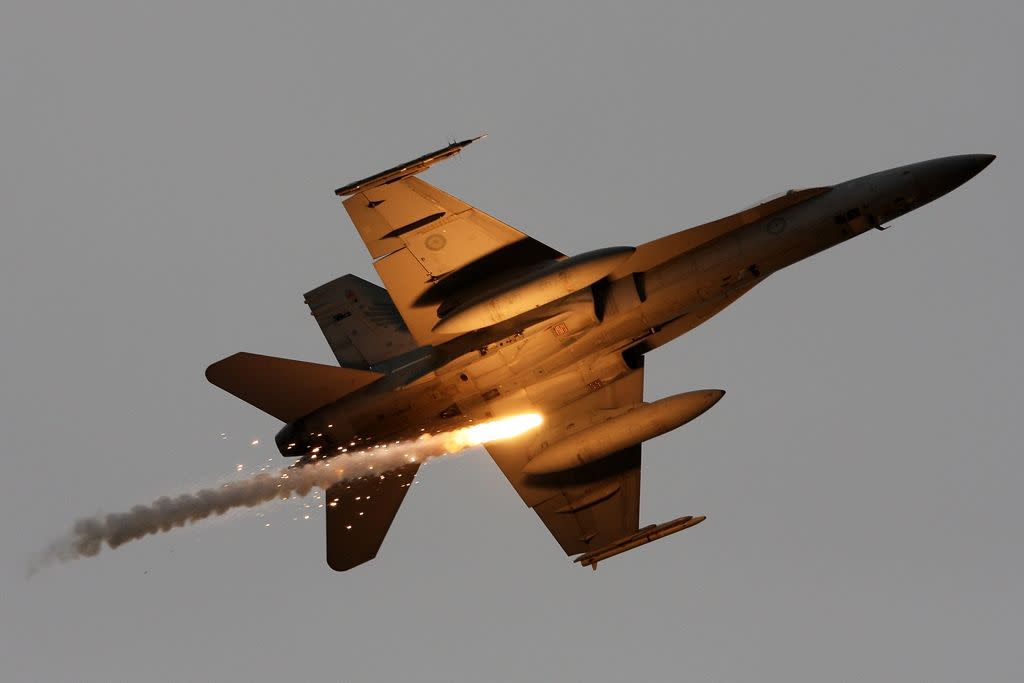
Australia’s Hornets do benefit from a bigger, longer-range AN/APG-73 radar than any F-16As that Ukraine is likely to get, improving its beyond-visual range capability. It also boasts 9 hardpoints for weapons, compared to 7 on the F-16. Furthermore, Australian F/A-18s can employ EL-2222 jamming pods to reduce vulnerability to radar-guided missiles until (hopefully) they get within range to employ their own AIM-120 or ASRAAM missiles. That said, Israel may exercise its licensing rights to block transfers of pods to Ukraine as it has for other weapons.
Popular Mechanics asked Mena Adel, who covers aviation exercises for Scramble magazine, for his thoughts on the relative merits of the Hornet versus the F-16 for Ukraine. He wrote:
“The plane has ruggedized landing gear that is more strongly suit the Ukrainian environment, in addition to better survivability for the pilots because it has two engines with the ability to carry more missiles for air engagement, and better maneuvering capabilities at medium-low speeds in within visual range engagements. It’s considered one of the best for those sorts of mission.”
He believes the two types could complement each other reasonably well:
“The combination of the two fighters greatly reduces the pressure on the F-16 in defensive counter-air missions. Also, the F-16 will be free to participate in offensive missions in the event of planning bold ambushes against Russian fighters or even attacking forces near the frontlines. Even the F/A-18 can cover the F-16 during the withdrawal, and it is also possible for the F-16 to open a gap with HARM anti-radar missiles targeting air defenses (much like what the Ukrainians do with their Soviet planes) for munitions launched from F-18s.”
Notably for surface attack missions, Hornets are compatible with a variety of precision guided weapons, including JDAM GPS-guided and Paveway laser-guided glide bombs, ship-sinking Harpoon Block II missiles (range 81 miles), and potent JASSM long-range stealth cruise missiles.
Adel noted that Hornets have trained before to fight in high-threat environments like those in Ukraine before:
“Despite the presence of advanced integrated air defense systems augmented with capable fighters posing a big threat … F/A-18s have consistently participated in exercises such as Red Flag including the latest Red Flag 21-3 … All of these tactics depend on electronic support from air and land ISTAR (Intelligence, Surveillance, Targeting Acquisition and Reconnaissance) assets via data links for both F-16s and F/A-18s. The main question remains the ability of the Ukrainian pilots to absorb these tactics and implement them.”
The Unique Australian Hornet
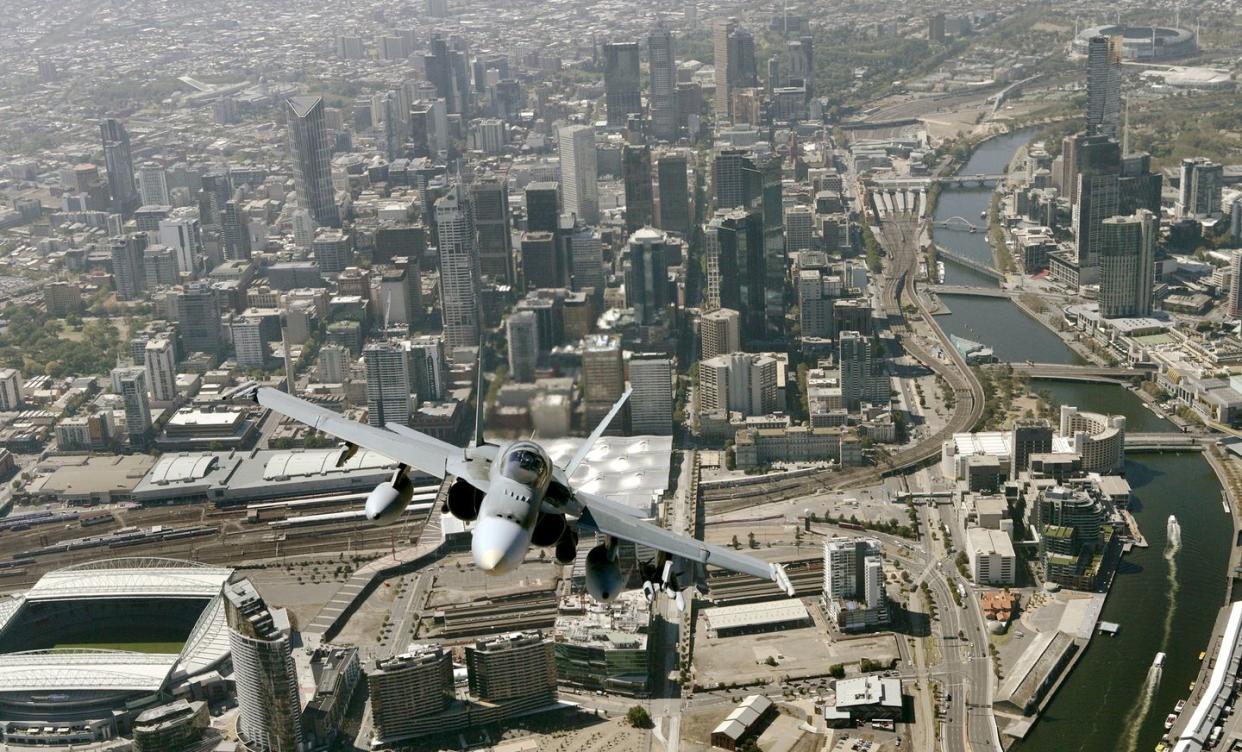
The Hornet found its way to the land down under to replace the RAAF’s delta-wing Mirage III fighters, beating out the F-14 Tomcat (too pricy) and the F-16 and Mirage 2000 single-engine fighters—thanks to safety benefits of having a second engine and more robust beyond-visual range capabilities than the latter two aircraft.
Australia ordered 47 FA-18As and 18 two-seat FA-18Bs to equip its No. 81 Wing (No. 3, 75, and 77 squadrons) and a training unit (No. 2 OCU). The first two were built at McDonnell-Douglas’s St. Louis plant as usual, while the remainder were assembled at an ASTA factory in Avalon using 40% Australian-built components.
The Australian Hornets differed only in having the irrelevant carrier landing equipment removed, as well as minor alterations to their radios, landing systems and ejection seat straps. The first aircraft entered service in 1985 and performed well, with only four lost to accidents 1987-1992 (though, sadly, all fatal) and none after that, compared to ten times as many crashed Mirage IIIs.
Hornets of No. 75 squadron first saw combat in 2003, flying 350 escort and close air support missions supporting U.S. Marines invading Iraq. Initially, they were flying escort missions, and then close air support, from Al Udeid airbase in Qatar. RAAF Hornets from No. 75 and later 77 squadrons returned to the Middle East twelve years later for the anti-ISIS war in January of 2015, flying 1,973 sorties and targeting ISIS in Iraq and Syria.
But before these expeditions, the introduction of fourth-generation fighters to Australia’s Pacific neighborhood compelled Canberra to institute its three-phased Hornet Upgrade Program (HUG), which began in 1999.
Most importantly, this replaced the original APG-65 radar with the digital AN/APG-73 pulse doppler radar, which had an an effective range of 92 miles and included new high-resolution ground-mapping capabilities.
Air-to-air combat capabilities were enhanced by introducing the long range AIM-120 fire-and-forget radar-guided AMRAAM missile and integrating a helmet-mounted sight that allowed pilots to target short-range ASRAAM missiles by craning their head (rather than pointing the nose of the whole aircraft). Larger, but sharing a similar infrared imaging seeker to the comparable U.S. AIM-9X short-range missile, ASRAAM trades some of the latter’s close-range maneuverability for longer range.
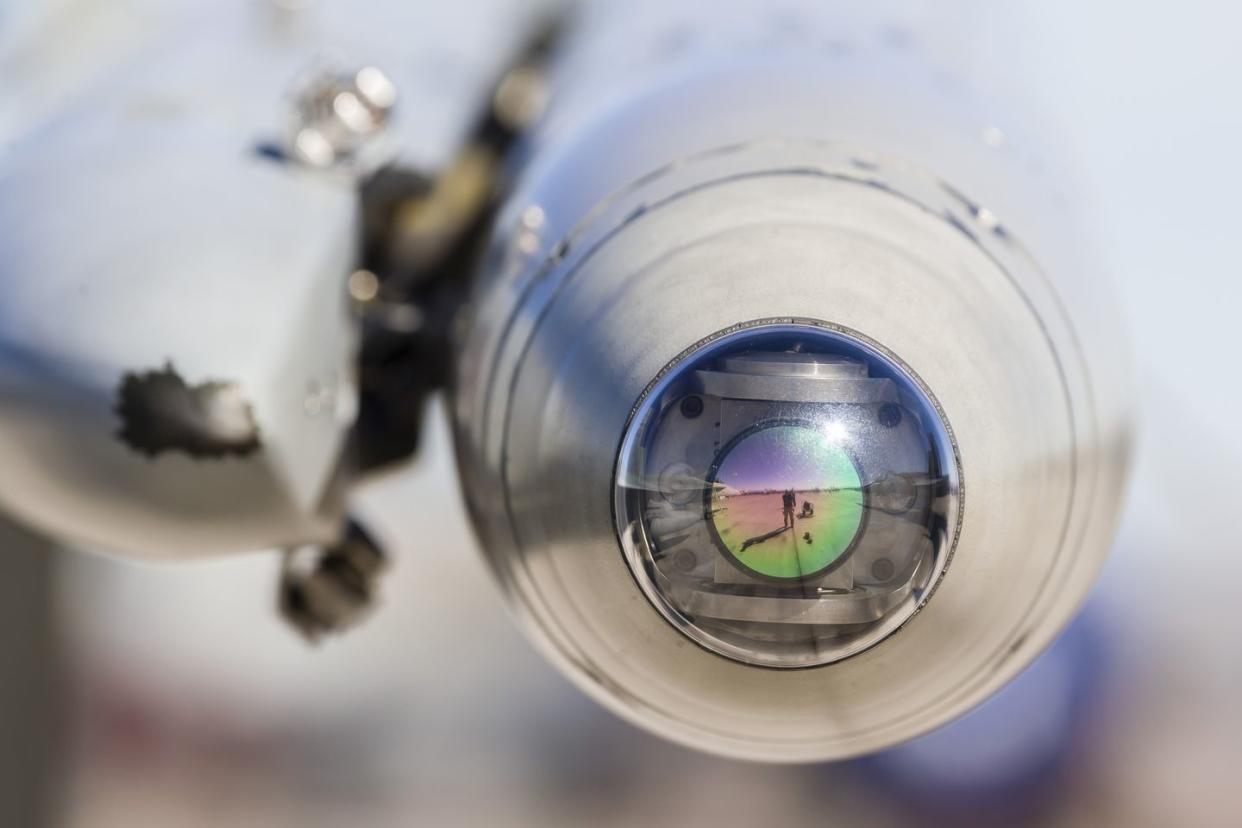
These Hornets also received AAS037 Nitehawk and Israeli-built Litening targeting pods equipped with gimbaled infrared and regular cameras, as well as a laser designator.
For improved survivability, they also received an ALR-67(V3) radar warning receiver, which outputs data on incoming threats to a 3” display in the cockpit.
Communications were enhanced with encrypted comms and the Link-16 datalink for networking with friendly forces. When Australia retired its F-111 Aardvark supersonic bombers, they passed on their Israeli-built EL/L-8222 self-defense jamming pods for mounting under the Hornet’s fuselage, which continuously scans for both air- and surface-based threat radars and automatically jams them.
Of course, RAAF modernization culminated in the acquisition of beefier Super Hornet fighters, EA-18G Growlers and, ultimately, F-35A stealth fighters that completely replaced the Hornets in service in 2021.
Making Ukraine a Hornet’s Nest?
An important final consideration will be Ukraine’s ability to sustain and expand its Hornet fleet. Arguably the reason that Ukraine fixated on obtaining F-16s was that there were thousands built, and they were used so extensively across the globe. It remains in production today, and is likely to receive additional upgrades in the coming decades.
The Hornet, however, is in its twilight, with production having ended long ago and most major Hornet operators planning to replace them with newer jets. But many of those operators are donors of military assistance to Ukraine, creating future opportunities for Ukraine to expand a national Hornet fleet.
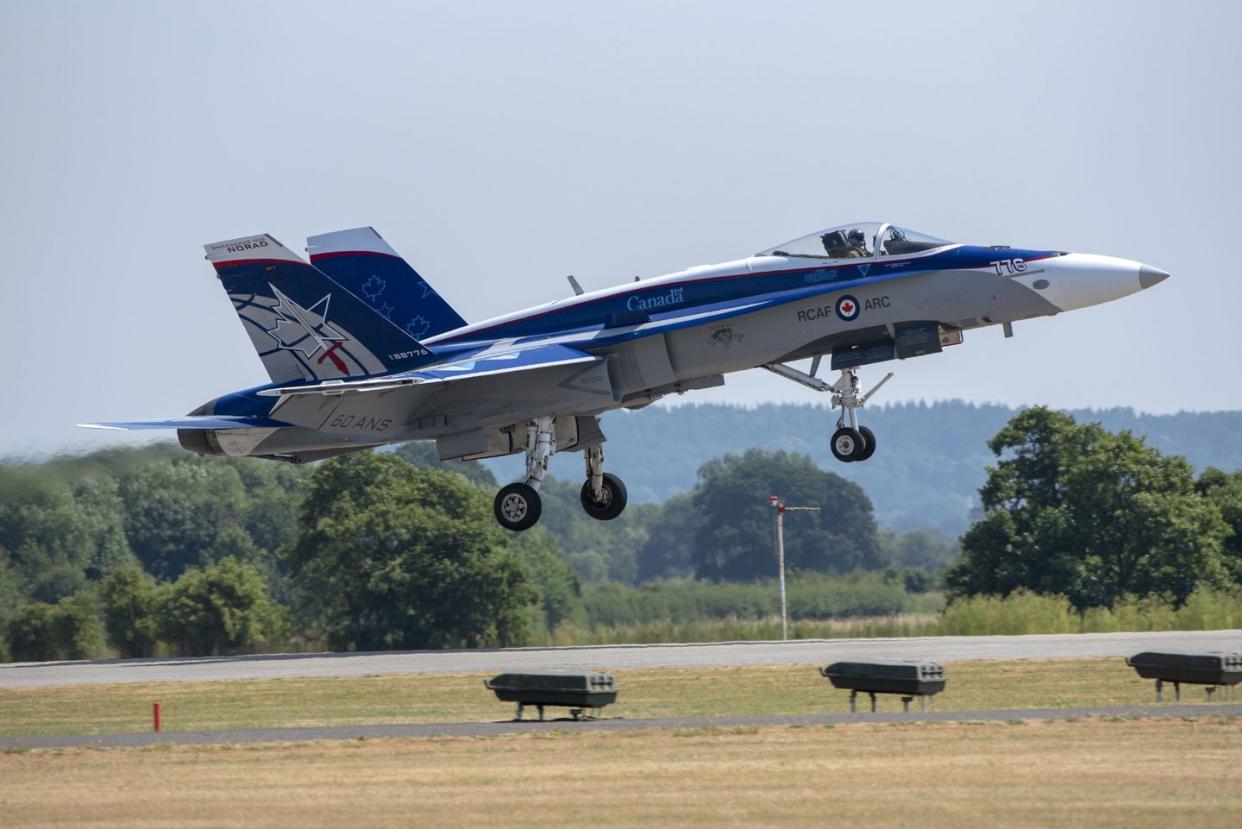
Notably, the Finnish Air Force still has 62 F/A-18C/Ds, Spain has around 84 F/A-18Cs and EF-18As in service, and Canada has around 86 customized CF-18As and Bs in service.
All of these operators are phasing in F-35A stealth jets to replace their Hornets in the second half of the 2020s. Of course, the U.S. has its own bucket of recently retired F/A-18s too, though some may be in worse condition due to salt-water exposure from carrier operations. These Hornet-operating countries could also help Ukraine train and maintain the type, whether or not they sell/donate any.
That suggests that Ukraine could eventually have a shot at acquiring a couple hundred hand-me-down F/A-18s from its allies, with additional theoretical opportunities from Switzerland (25 Hornets), Kuwait (55) and Malaysia (8).
But even as appealing as free fighters sounds, it would still require a considerable investment by Ukraine of money and personnel toward a fleet of aircraft which are no longer cutting edge and near the end of their service lives (thus requiring paying for life extensions). This would prevent resources from instead of going toward newer 4.5-generation designs that can more confidently go head-to-head with Russia’s Su-35s. The cost-benefit analysis may explain why Ukraine hasn’t made a full-throated push for Australia’s FA-18s … yet, that is.
You Might Also Like
